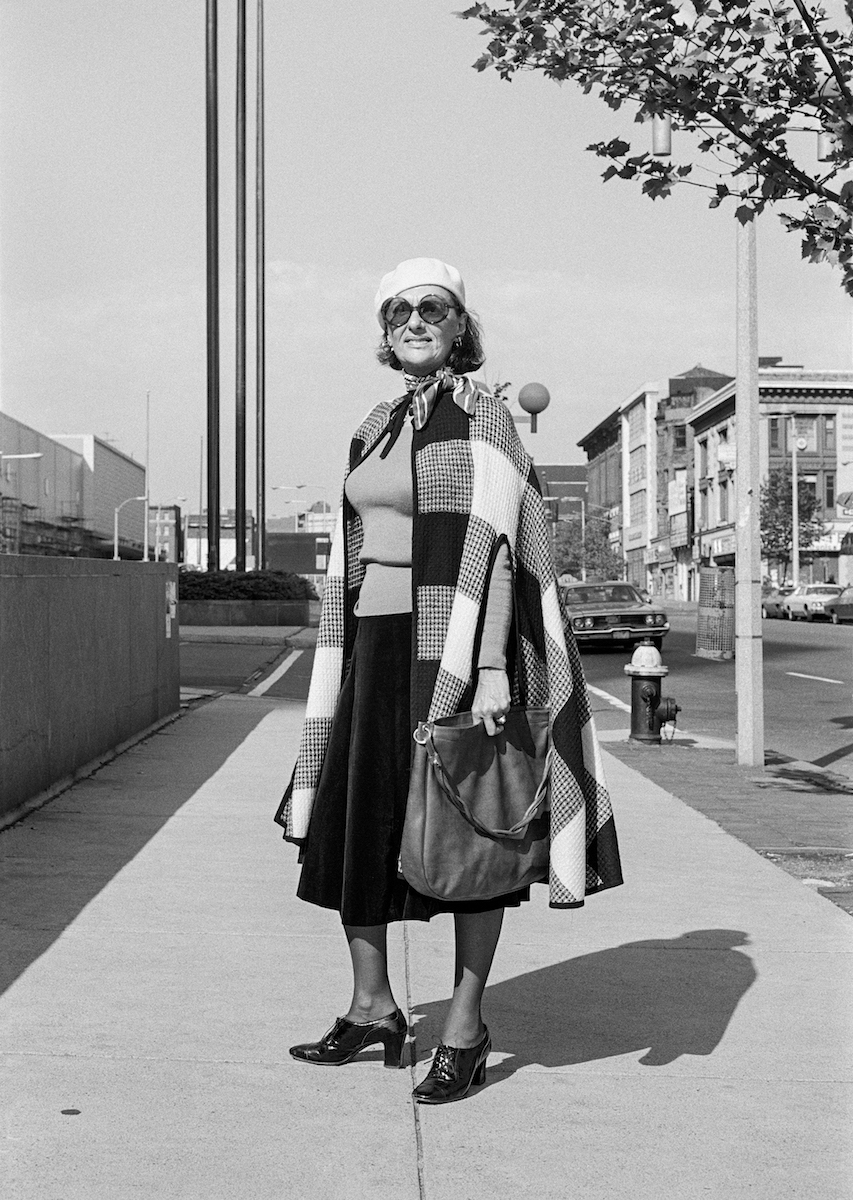Captivating portraits of Bostonians in the ‘70s
- Text by Miss Rosen
- Photography by Streets of Boston

While serving in the US Army during the Vietnam War, American photographer Mike Smith picked up his first camera at the age of 20. “I made pictures of the landscape, Vietnamese people and my army buddies,” he says. “Initially I thought of it as a sort of journal; a reminder of places and culture.”
After returning to Brockton, Massachusetts, in the early 1970s, Smith began working as a gallery guard in a small museum that had a show of Ansel Adams’s landscapes. Along with soaking in Adams’s work, he spent a lot of time looking at photographs by W. Eugene Smith and Edward Weston.

“Because of its intense human interaction and its fluid nature, Eugene Smith’s work affected me the most,” he says. “It was then I started making pictures in my neighbourhood and knew something was happening.”
After studying social work in a community college, Smith enrolled in Massachusetts College of Art (now MassArt) in Boston an got a job at a local art museum. He found himself drawn to the strangers moving through the different neighbourhoods, and began to make photographs of the people he encountered.
After an incident with an angry man on the street in 1976, Smith traded in his Leica for a Linhof Press 23 camera – a twist of fate that proved to be an unexpected windfall for his photography practice. In lieu of spontaneous street photos, Smith began to make a collection of intimate black and white street portraits collected in the new book and exhibition, Streets of Boston.


For Smith, the camera worked best at a distance of four to five feet from his subjects, creating a deeper feeling of connection with his subjects. On top of this, the medium format camera gave the photographs a sharpness and tonality that the 35mm camera did not possess. Skin became more supple, fabrics more rich, concrete more gritty, foliage more fresh. God, as they say, was in the details.
“The streets provided a background for the actors to pause and present themselves – but it was a general, rather than specific role,” says Smith. “How they fit in or related to the setting and the frame was the central part of my role as photographer.” Although Smith says he’s not one for judging the character of strangers based on appearances, his camera seems capable of suggesting personality traits.

“I hope there is an apparent reason, however subtle or dramatic, in each one: the little girl’s crossed legs or her crinkled book bag, the man’s hair clip, the shoe polished eyebrows of the pilot. I suspect the intimacy of the work stems from the proximity and the care I took to resolve the picture. I got close and took my time,” he says.
“I think the main point of the book is being curious about others and having the desire to explore the culture, the inhabitants of our world. I was trying to create a body of work that somehow extended beyond myself.”



Streets of Boston is available on Stanley Barker.
Follow Miss Rosen on Twitter.
Enjoyed this article? Like Huck on Facebook or follow us on Twitter.
You might like

In Medellín’s alleys and side streets, football’s founding spirit shines
Street Spirit — Granted two weeks of unfettered access, photographer Tom Ringsby captures the warmth and DIY essence of the Colombian city’s grassroots street football scene.
Written by: Isaac Muk

Remembering New York’s ’90s gay scene via its vibrant nightclub flyers
Getting In — After coming out in his 20s, David Kennerley became a fixture on the city’s queer scene, while pocketing invites that he picked up along the way. His latest book dives into his rich archive.
Written by: Miss Rosen

On Alexander Skarsgård’s trousers, The Rehearsal, and the importance of weirdos
Freaks and Finances — In the May edition of our monthly culture newsletter, columnist Emma Garland reflects on the Swedish actor’s Cannes look, Nathan Fielder’s wild ambition, and Jafaican.
Written by: Emma Garland

Why Katy Perry’s space flight was one giant flop for mankind
Galactic girlbossing — In a widely-panned, 11-minute trip to the edge of the earth’s atmosphere, the ‘Women’s World’ singer joined an all-female space crew in an expensive vanity advert for Jeff Bezos’ Blue Origin. Newsletter columnist Emma Garland explains its apocalypse indicating signs.
Written by: Emma Garland

Katie Goh: “I want people to engage with the politics of oranges”
Foreign Fruit — In her new book, the Edinburgh-based writer traces her personal history through the citrus fruit’s global spread, from a village in China to Californian groves. Angela Hui caught up with her to find out more.
Written by: Angela Hui

We are all Mia Khalifa
How humour, therapy and community help Huck's latest cover star control her narrative.
Written by: Alya Mooro

